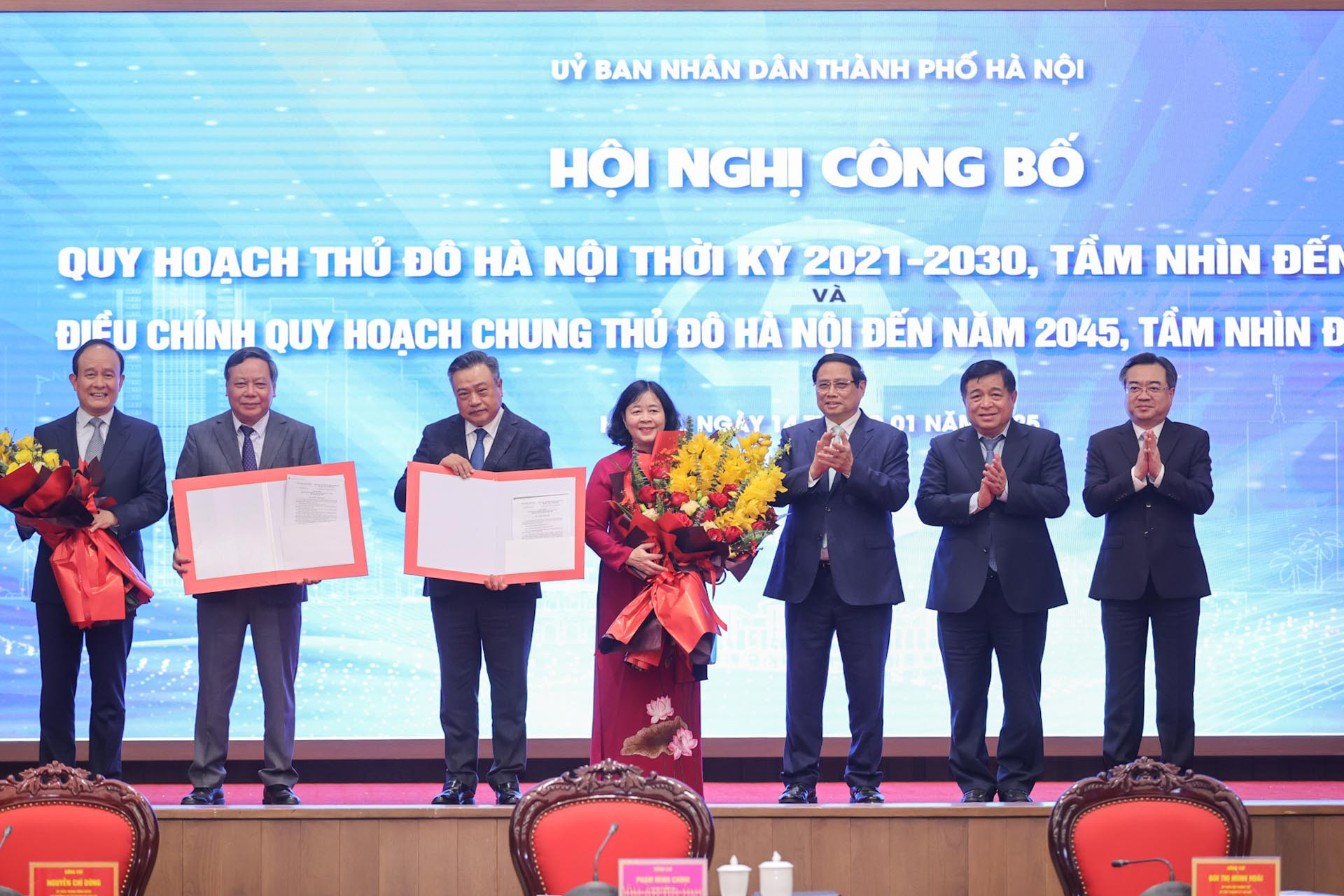
Speaking at the announcement of Hanoi’s master plan for 2021–2030 with a vision to 2050, and the adjustment to its general plan for 2045–2065, the Prime Minister highlighted the importance of sustainable urban development.
Approved under Decision No. 1569 on December 12, 2024, the master plan spans 3,359.84 square kilometers, targeting an average GRDP growth rate of 8.5–9.5% by 2030. The city’s projected permanent population is 10.5–11 million people.
Key components of the plan include:
Five development corridors: The Red River; West Lake to Co Loa; Nhat Tan to Noi Bai; West Lake to Ba Vi; and the Southern region.
Polycentric urban structure: Dividing Hanoi into five urban regions, each with distinct functions and growth directions.
Specific regions include:
Southern Region: Historical core areas and urban expansions in districts like Ha Dong, Hoai Duc, and Thanh Tri.
Eastern Region: Comprising Long Bien District and Gia Lam.
Northern Region: Covering Dong Anh, Me Linh, and Soc Son, envisioned as a future northern city.
Western Region: Incorporating Son Tay, Ba Vi, and Thach That, with plans to elevate Son Tay to city status.
Southern Region: Including Thanh Oai, My Duc, and Phu Xuyen, with potential for a future southern city.
The plan also proposes developing a second airport south of Hanoi in Ung Hoa and Phu Xuyen districts, with reserved land and infrastructure for this purpose.
Immediate action for environmental and traffic issues
At the conference, the Prime Minister emphasized the need to align implementation with Party policies, state laws, and the aspirations of citizens. He urged Hanoi to identify appropriate, effective strategies to mobilize resources.
Specific tasks include:
Air pollution mitigation: Developing initiatives to improve air quality.
Traffic congestion solutions: Implementing scientific traffic management systems to ease congestion.
River revitalization: Reviving polluted or stagnant rivers to restore ecological balance and aesthetics.
The Prime Minister requested that these projects be developed and submitted to the government by Q1 2025.
Acknowledging the challenges of balancing growth with sustainability, Prime Minister Chinh commended the planning efforts for recognizing Hanoi’s unique potentials, while addressing conflicts and limitations.
He called for effective mobilization of resources to bring these plans to fruition, ensuring Hanoi’s development aligns with the expectations of its residents.
Quang Phong